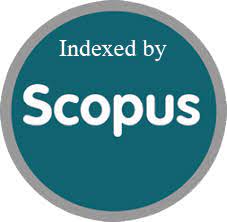Preparation And Characterization Of A Phytomedicated Antifungal Cream Containing Ocimum Sanctum
DOI:
https://doi.org/10.63682/jns.v14i31S.7088Keywords:
Ocimum sanctum, herbal ointment, antimicrobial activity, wound healing, phytochemical screeningAbstract
Introduction: Ocimum sanctum (Tulsi) is widely recognized for its diverse pharmacological properties, including antimicrobial and wound healing activities.
Objectives: This study aimed to formulate and evaluate an herbal ointment using Ocimum sanctum leaf extracts for potential wound healing applications. The objectives included phytochemical screening, antimicrobial efficacy assessment, and ointment formulation evaluation.
Materials and Methods: Leaves of Ocimum sanctum were collected, dried, and subjected to extraction using ethanol. Preliminary phytochemical tests identified the presence of flavonoids, tannins, and phenolics. Antimicrobial activity was assessed using the agar well diffusion method against common wound pathogens. The extract was incorporated into an ointment base, and the formulation was evaluated for physical parameters, stability, and antimicrobial effectiveness.
Results: Results demonstrated significant inhibition zones against Staphylococcus aureus and Pseudomonas aeruginosa, confirming potent antimicrobial action. The ointment exhibited good spreadability, homogeneity, and physical stability over 30 days.
Conclusion: This study concludes that Ocimum sanctum leaf extract ointment holds promise as an effective herbal wound healing agent with antimicrobial properties. Further clinical studies are warranted to validate its therapeutic potential.
Downloads
Metrics
References
Prakash P, Gupta N. Therapeutic uses of Ocimum sanctum Linn (Tulsi) with a note on eugenol and its pharmacological actions: A short review. Indian J Physiol Pharmacol. 2005;49(2):125-31.
Cohen MM. Tulsi - Ocimum sanctum: A herb for all reasons. J Ayurveda Integr Med. 2014;5(4):251-9.
Rai V, Agnihotri A. Antimicrobial activity of Ocimum sanctum extracts against clinical isolates. Int J Pharm Pharm Sci. 2017;9(3):207-10.
Gupta S, Prakash J, Srivastava S. A review on pharmacological activities of Ocimum sanctum (Tulsi). Int J Pharm Sci Rev Res. 2010;5(1):41-5.
Singh S, Taneja M, Majumdar DK. Biological activities of Ocimum sanctum L. fixed oil—an overview. Indian J Exp Biol. 2007;45(7):579-86.
Singh S, Jain H, Vyas P and Nama N. Formulation and evaluation of multifunction general use cream. Career Point International Journal of Research (CPIJR) 2022: 1(2): 69-81.
Kokate CK, Purohit AP, Gokhale SB. Pharmacognosy. 50th ed. Nirali Prakashan; 2014.
Mukherjee PK. Quality Control of Herbal Drugs: An Approach to Evaluation of Botanicals. Business Horizons Pharmaceutical Publishers; 2002.
Bauer AW, Kirby WM, Sherris JC, Turck M. Antibiotic susceptibility testing by a standardized single disk method. Am J Clin Pathol. 1966;45(4):493-6.
Parveen S, Jain H and Nama N. Formulation and Evaluation of Piperine and Psoralea Corylifolea antivitiligo Cream. Int. J. Phar. & Biomedi. Rese. 2021; 8(4): 15-21.
Brand-Williams W, Cuvelier ME, Berset C. Use of a free radical method to evaluate antioxidant activity. LWT Food Sci Technol. 1995;28(1):25-30.
Indian Pharmacopoeia Commission. Indian Pharmacopoeia. Vol. II. Government of India, Ministry of Health and Family Welfare; 2018.
Downloads
Published
How to Cite
Issue
Section
License

This work is licensed under a Creative Commons Attribution 4.0 International License.
You are free to:
- Share — copy and redistribute the material in any medium or format
- Adapt — remix, transform, and build upon the material for any purpose, even commercially.
Terms:
- Attribution — You must give appropriate credit, provide a link to the license, and indicate if changes were made. You may do so in any reasonable manner, but not in any way that suggests the licensor endorses you or your use.
- No additional restrictions — You may not apply legal terms or technological measures that legally restrict others from doing anything the license permits.










